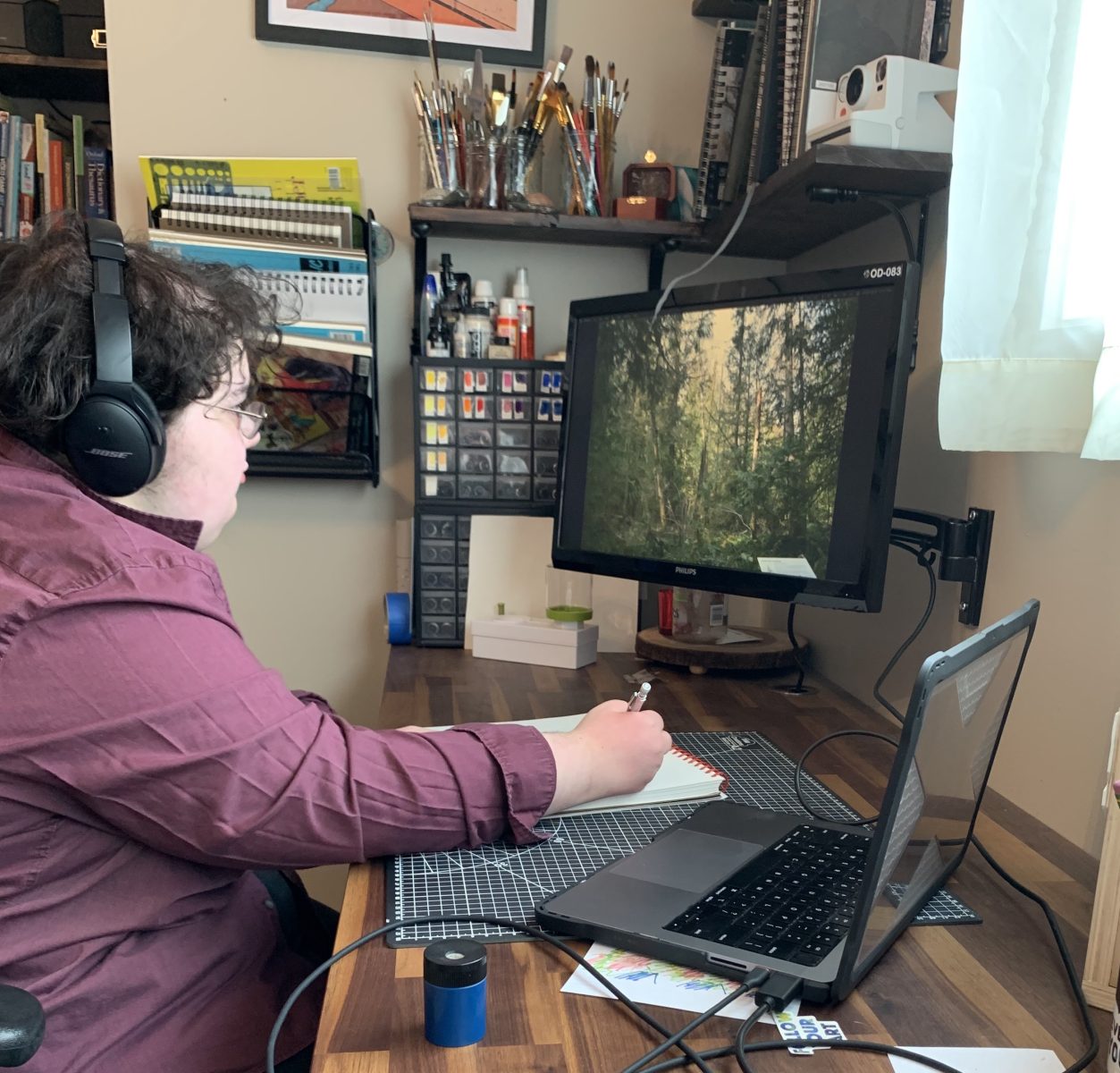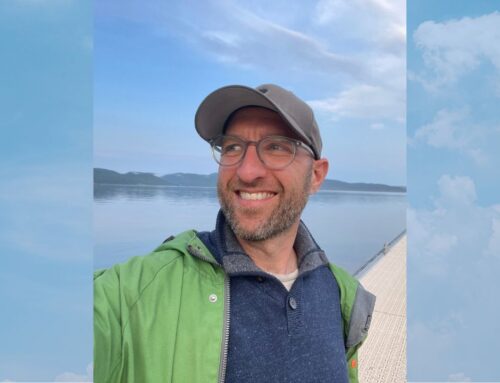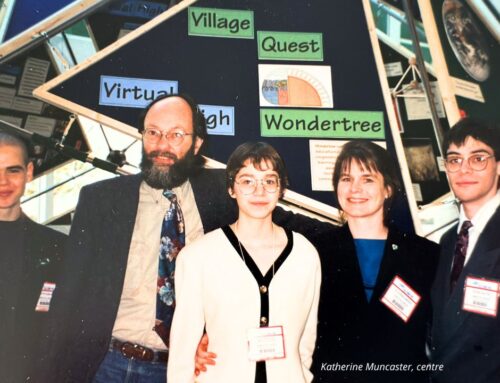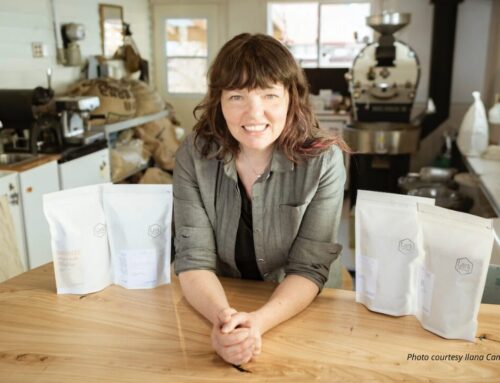When Cass starts the Bachelor of Arts program in Digital Media Studies at Vancouver Island University this month, he already will have one of the four-year program’s courses under his belt.
Cass commenced from SelfDesign in June. During grade 12, he took one of the program’s first-year-level courses as part of the BC Ministry of Education and Child Care’s dual-credit program.
The program is available to learners in higher grades in B.C. It allows learners to earn high school credits that count towards their BC certificates of graduation (Dogwood Diplomas) while banking the course credits for university.
Cass worked with SelfDesign’s Guidance team to set the opportunity up. The Guidance team provides information about the opportunity to interested learners, processes requests, and makes sure the paperwork required by the Ministry is complete and filed.
“We track the high school credits for courses current learners take at the college or university level while still enrolled with SelfDesign,” says team coordinator Ruby Payne. It’s part of the work the team does every day to support all learners to complete their journeys with SelfDesign, no matter the goals identified by the learner.
“The opportunity allowed me to get familiar with the post-secondary format and with the university’s system,” Cass says. “And, having already completed a course for the program, I ended up being registered in the program before I even finished high school.”
Home learning with SelfDesign: flexibility and opportunity
Cass began his SelfDesign journey in grade 2 with our home-schooling program, SelfDesign Home Learning (then called Home Learners’ Network).
He’d been diagnosed with apraxia of speech, a motor speech disorder that makes it hard to speak. Home learning allowed him to get the therapy he needed without interrupting his learning.
“My very amazing mom taught me,” Cass says. “Learning at home also allowed me to pursue my interests in filmmaking, storytelling, digital media, and all that stuff. It provided the flexibility for me to pursue my passions and gave me time to build skills related to those interests.”
Recognizing he’d want to pursue his interests further with post-secondary studies, Cass knew he needed to finish grade 12 with a Dogwood Diploma. He transferred to SelfDesign® Learning Community for grade 10.
“It was a very different structure, with much more structured learning,” he says of the transition. “But I was able to use it as an opportunity and to incorporate my interests and passions into my learning.”
Pursuing a passion for gaming
Cass’s interests and passions centre around video games. 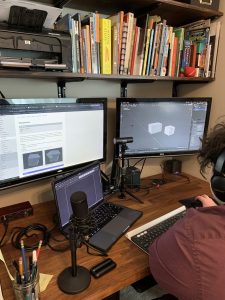
He loves playing video games. He loves watching other people play them and seeing how they react to and interact with different components of a game.
He wants to write and develop video games. In particular, he wants to write and produce interactive games, the kind of video games in which players can choose to follow and direct a number of constantly diverging storylines.
Grades 10 to 12 at SelfDesign allowed him to dive deeply into those interests. In grade 10, he enrolled in the Life Gamified theme. In grade 11, he took the Virtual Dreamers theme. Both themes provide safe spaces for learners interested in technology, coding and gaming to explore those interests, learn more, and create and connect with others with similar passions.
In addition, learners in grades 10 to 12 take part in weekly learning challenges related to the courses and themes they take. They also complete a more involved personal project each semester on a topic or area of interest to further their learning.
For his first grade 10 personal project, Cass used Minecraft to make a short whodunnit film about forensic science. Minecraft is a popular role-playing video game platform in which players create and break apart structures and landforms in three-dimensional virtual worlds.
Cass’s film follows the story of a detective investigating a crime. The mystery unfolds as the character takes samples from the crime scene and uses different kinds of forensics to piece together what happened.
“I let the unfolding action tell the story based on what I had learned about forensic science,” he says. “For example, the detective in the film tests for motor oil on the ground in one scene, and from the results of the tests, you know that a motorcycle had been there at some point.”
For his second personal project, Cass learned an open-source software program called Blender that allows users to create three-dimensional models.
“That was the first time I used that program, and it’s a skill I now use regularly,” he says. “It’s a skillset that is useful for any sort of 3-D game. And SelfDesign gave me the opportunity to learn it as part of my schoolwork.”
Because of our online learning platforms, learners are challenged to share their thoughts digitally, says his learning consultant, Michael Bender. “This gives those interested in technology the opportunity and encouragement to explore software options to enhance the communication of their ideas. Cass used this opportunity to learn new art, storytelling and game design programs and develop his ability to create a portfolio of examples of his learning experiences.”
In Vancouver Island University’s Digital Media program, Cass is taking his interests in digital media and media studies further. When he graduates, he’ll have the skills to work as a screenwriter, animation concept artist, web developer, multimedia producer and video game developer.
Vital skills for learning… and life
Cass says the biggest challenge coming into grade 10 with SelfDesign Learning Community was adjusting to deadlines.
“In the early semesters especially,” he says, “I would create these really ambitious projects. I didn’t work on anything else, often losing sleep to work on them. I was working on the equivalent of a three-year-long project for one semester, and that wasn’t reasonable.”
He says he struggled with and really worked towards finding a healthy balance.
“It was a process to learn how to prioritize and to better scope out project size, and also how to still be proud and passionate about what I was working on while keeping within the confines of the project requirements,” he says.
Cass explored his work–life balance throughout his high school experience, says Michael, who as Cass’s learning consultant, supported and guided him throughout his grade 10 to 12 years.
“He created impressive learning artifacts while managing his needs outside and outside of his learning activities,” Michael says. “Cass is a passionate learner, and he often reflected on his ability to create healthy boundaries that supported his life goals and not just his learning goals.”
Cass learned how to evaluate how much time in the week he needed to work on his learning challenges. He learned how to prioritize. He learned to factor in time for rest and self-care, for friends and family, and for hobbies and other interests, as well as for the unexpected.
“I feel like I still have a lot to learn,” he says, “but I’m more confident in my ability to manage my time and to balance what I need and also what I want to get done.”
The time and project management skills Cass acquired at SelfDesign have broader applications. They will stand him in good stead as he studies film production, multimedia and video game design and other aspects of digital media at Vancouver Island University.
They will also help him afterwards, during his career.
“There’s a lot of freedom in game development,” he says, “but at some point, you have to be able to finish and launch the game.”
Cass says, “I’m very grateful to SelfDesign for giving me these opportunities because they’ve definitely helped my confidence going into post-secondary.”
Read more about grades 10 to 12 at SelfDesign
Learn about the three paths to completion our learners can take

